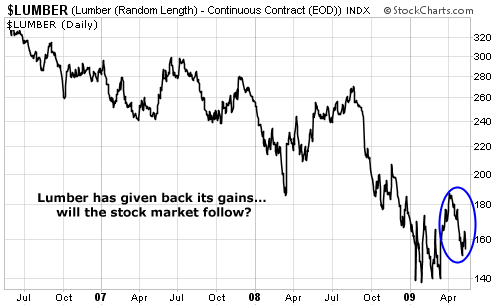Loonie defies economic wreckage, but that's a bad thing
Fri May 29, 6:12 PMBy Julian Beltrame, The Canadian Press
OTTAWA - The recession has handed Canada its first double deficit in years but it's what many would consider good news - a suddenly resurgent loonie - that poses the newest economic threat.
The Canadian currency rose almost two cents Friday to soar well past the 91 cent US level for the first time since October, blithely oblivious to the economic wreckage piling up around it.
It's the last thing the Canadian economy needs at this time, say economists, because a strong loonie prices exports out of foreign markets.
"We're always concerned when there are rapid fluctuations in the value of the Canadian dollar and it has been relatively rapid in the past few weeks," said Finance Minister Jim Flaherty in a press conference.
He added that the Bank of Canada is monitoring the situation.
The latest economic news was sour on a number of fronts.
The federal government officially ushered in a new era of multi-year deficits, reporting it was short $3.6 billion in March, and ended the 2008-09 fiscal with the first annual deficit in a dozen years with an estimated $2.2-billion shortfall.
That's just the beginning. Flaherty is now booking a record $50 billion shortfall for this current fiscal year.
As well, the current account deficit - which measures transactions in goods and services with the rest of the world - also ballooned to $9.1-billion in the first quarter of 2009 after years of surpluses, reflecting the collapse of commodity prices and slower trade caused by the recession.
The true picture of just how badly the economy has nosedived will become clearer Monday when Statistics Canada reports on the first quarter gross domestic product.
Economists and the Bank of Canada are convinced the data will show a contraction of more than seven per cent, the worst quarterly retreat since the Great Depression and more than the 5.7 per cent contraction reported in the United States.
Such a serving of poisonous economic data would normally have sent investors running for the bear cave, but instead they sent the loonie skyward and pushed the stock market to a 2009 high on Friday.
The S&P/TSX composite index hit an intraday high of 10,493 and closed at 10,370 on Friday. It's still well short of the alltime high of 15,154 set nearly a year ago but up from the March 6 low of 7,479.
The loonie's strength is one part based on expectations of rising demand for oil and minerals that Canada has in abundance, and two parts the weakness of the American dollar, which makes the Canadian currency and commodities more attractive, say economists.
TD Bank chief economist Don Drummond predicted the loonie will return to parity with the U.S. greenback by the end of the year.
"This is problematic for the Bank of Canada, which wants monetary conditions to be high stimulative," said Avery Shenfeld, chief economist with CIBC World Markets.
"If this currency rally persists, and is not accompanied by an equivalent rally in our export prospects, the bank could step in by selling the Canadian dollar.
"That's a weapon that's been gathering rust, not having been used for many years, and the bank will be reluctant to do that," Shenfeld added.
But it may be the only weapon on hand. In normal times, the central bank would cut interest rates to trim the loonie's wings, but with the policy rate already at the practical low of 0.25 per cent, it can't cut rates further.
In a research paper, economist Dale Orr said the dollar often moves whenever increased global growth drive up demand and the price of crude oil, and other commodities that Canada exports.
But he said the loonie's current flight is more a case of the U.S. currency's fall, caused by prospects of a global turnaround and investors no longer seeing America as a safe haven in a sea of troubles.
The world is also factoring in the fact that as bad as the situation is in Canada, it's worse elsewhere - the best of a bad lot syndrome.
Canada's projected $50 billion deficit for 2009-10 represents 3.3 per cent of the size of the economy, compared to the U.S.'s 1.75 trillion shortfall, which is near 13 per cent of its economy.
"These numbers are fairly large, but in comparison basis not as bad as others," explained Paul Ferley of RBC Economics.
"The other thing is the starting point in our fiscal position is better than most other G7 countries, so that puts us in a better position to withstand the bad news."
The $9.1 billion current account deficit set a nominal record, but as a percentage of gross domestic product it was well less than half the 5.1 per cent recorded in the first quarter of 1975.
Economists said Canadians should expect the current account - the measure of what Canada spends and earns - to remain in negative territory for most of the year.
As for the government books, most now say it will take six years to get out of the hole, although the finance minister is sticking to a four-year horizon.
Friday's release of the fiscal monitor will go down as an historical curiosity pinpointing the moment Ottawa officially dipped from a surplus into a deficit position.
That occurred in March, when revenues, particularly from business taxes, literally hit the wall.
The government said corporate income tax receipts were down $2.1 billion, or 46.8 per cent, from the same month last year as firms began claiming refunds for having overestimated their profits. As well, revenues from personal income taxes declined by $1.3 billion, or 12.4 per cent.



